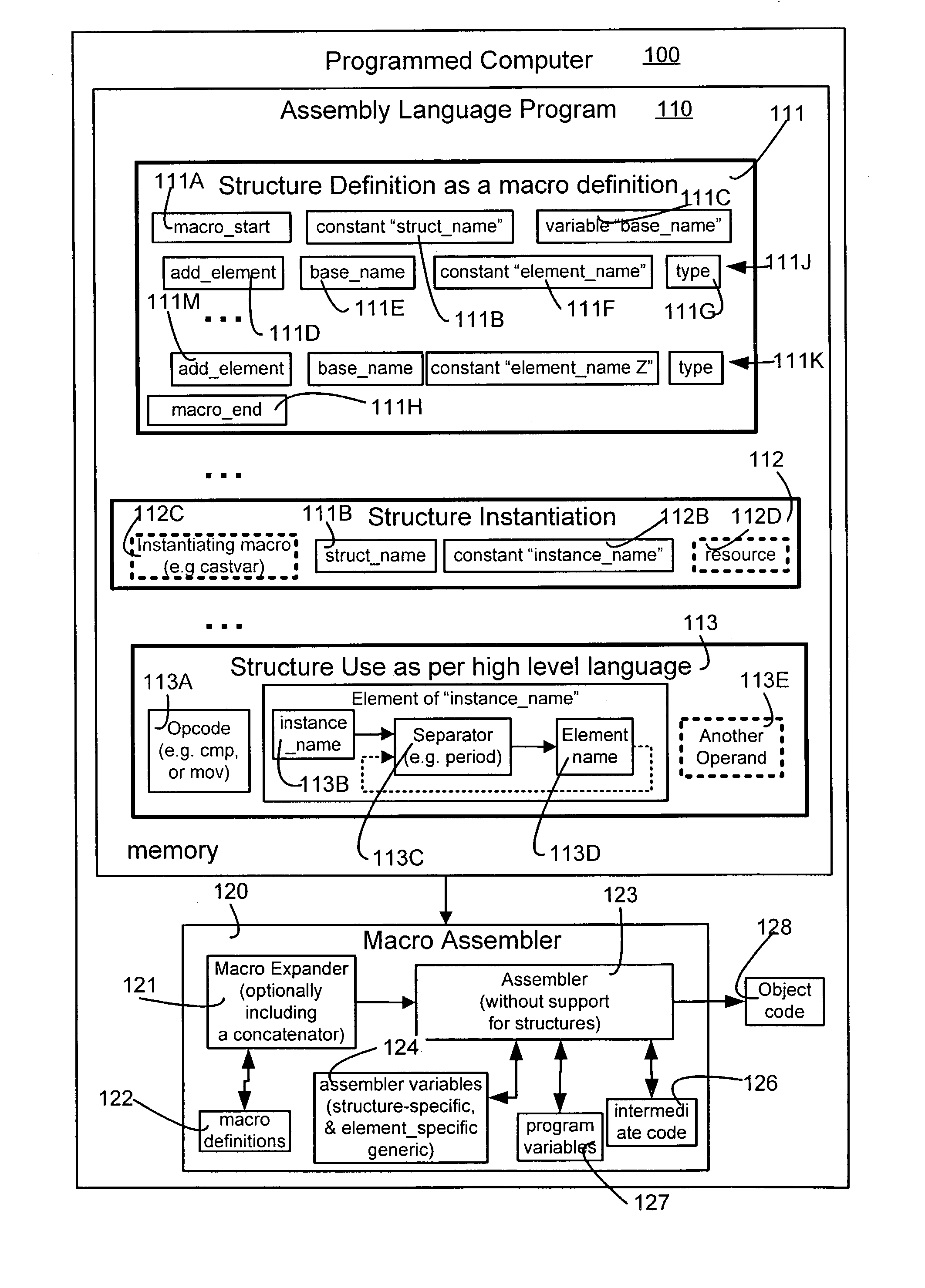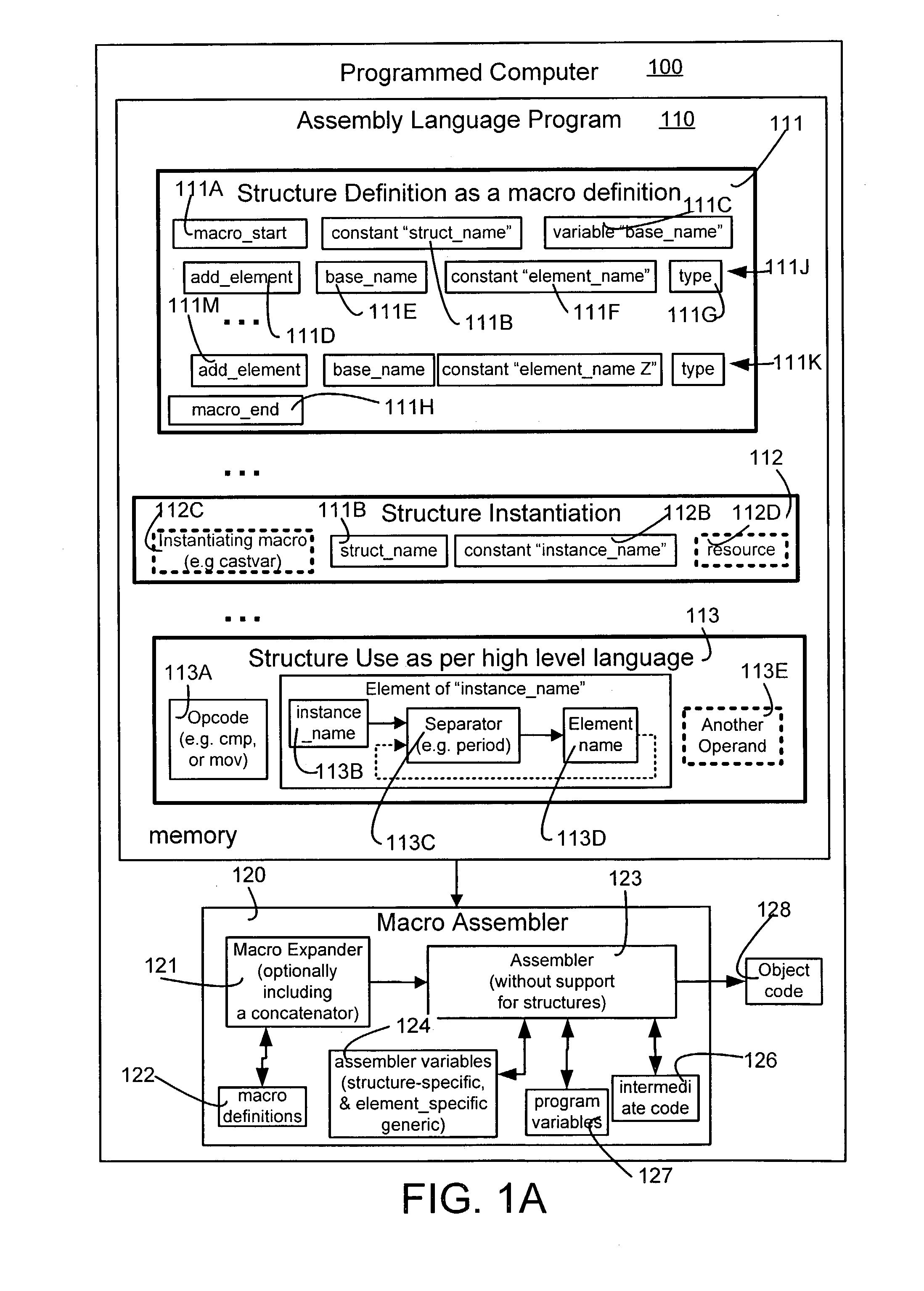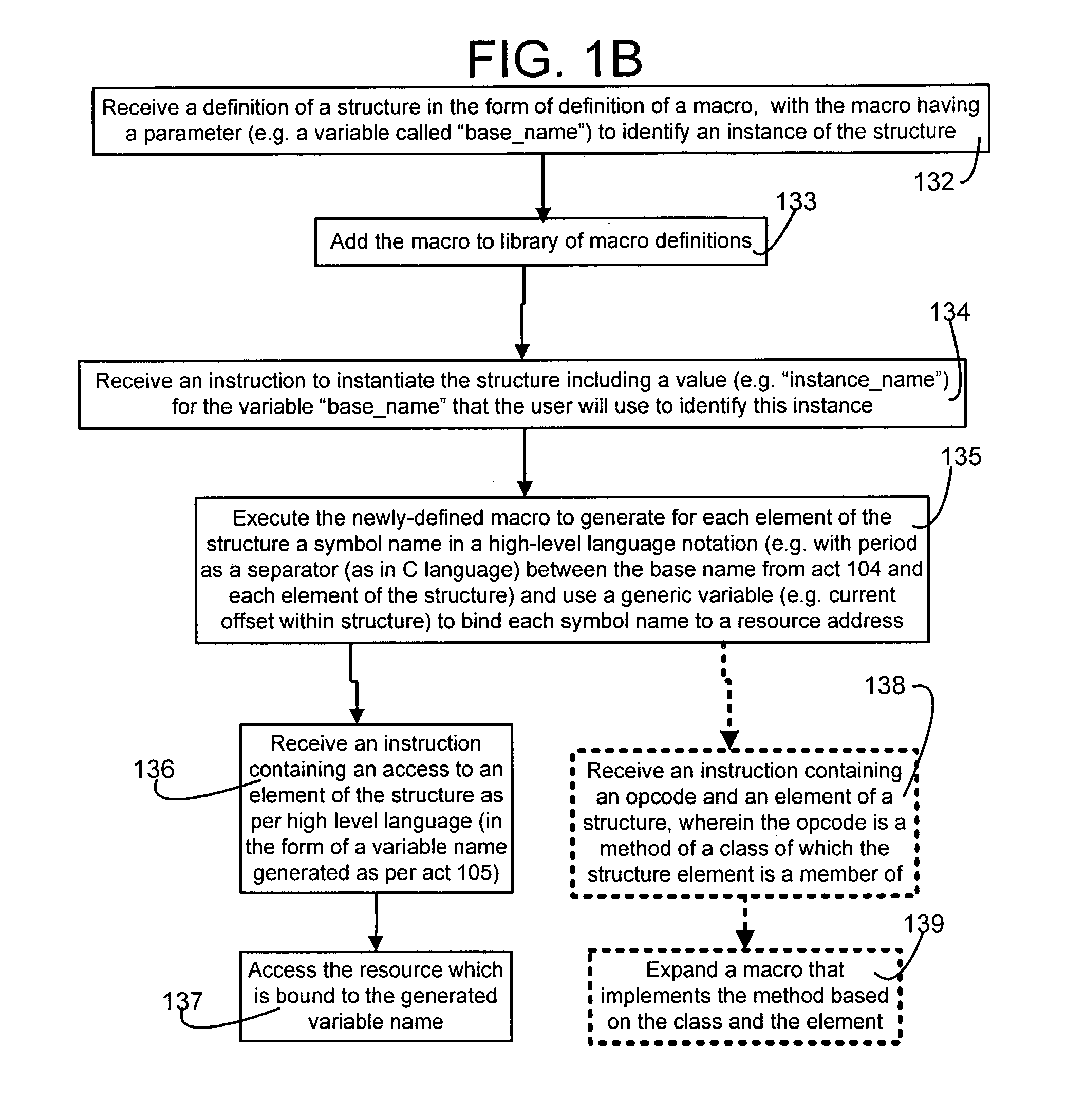Macros to support structures for an assembler that does not support structures
a technology of assemblers and structures, applied in the field of assemblers that do not support structures, can solve the problems of inability to support structures provided in assembly languages of network processors, inability to support structures provided by nasm assemblers, and significant effort required to prepare software (in assembly language) for execution by such network processors
- Summary
- Abstract
- Description
- Claims
- Application Information
AI Technical Summary
Benefits of technology
Problems solved by technology
Method used
Image
Examples
example _
[0114]BEGIN_UNION (example_u)
[0115]ADD_UNION_MEMBER (example_u, u8_t, union_byte_var)
[0116]ADD_UNION_MEMBER (example_u, u16_t,
[0117]union_word_var)
[0118]END_UNION (example_u)
[0119]ADD_MEMBER (u32_t, dword_var)
[0120]CLOSE_BRACKET (example_s)
[0121]END_STRUCTURE_TYPEDEF (example_s)
[0122]In such an embodiment, the user generates an assembly language program 304 which contains one or more C like structure definition(s) that are converted by a C preprocessor 306 (also called CPP) in accordance with a number of directives into macro definition 111.
[0123]As shown above, each token of a typedef construct in the C language may have a corresponding #define that is predefined e.g. BEGIN_STRUCTURE_TYPEDEF, OPEN_BRACKET, CLOSE_BRACKET, and END_STRUCTURE_TYPEDEF. Such predefined macros may be implemented as just #define directives to the CPP. In the above described embodiment the acts performed by CPP are illustrated in FIG. 3B, and acts performed by a macro expander are illustrated in FIG. 3C and...
PUM
 Login to View More
Login to View More Abstract
Description
Claims
Application Information
 Login to View More
Login to View More - R&D
- Intellectual Property
- Life Sciences
- Materials
- Tech Scout
- Unparalleled Data Quality
- Higher Quality Content
- 60% Fewer Hallucinations
Browse by: Latest US Patents, China's latest patents, Technical Efficacy Thesaurus, Application Domain, Technology Topic, Popular Technical Reports.
© 2025 PatSnap. All rights reserved.Legal|Privacy policy|Modern Slavery Act Transparency Statement|Sitemap|About US| Contact US: help@patsnap.com



